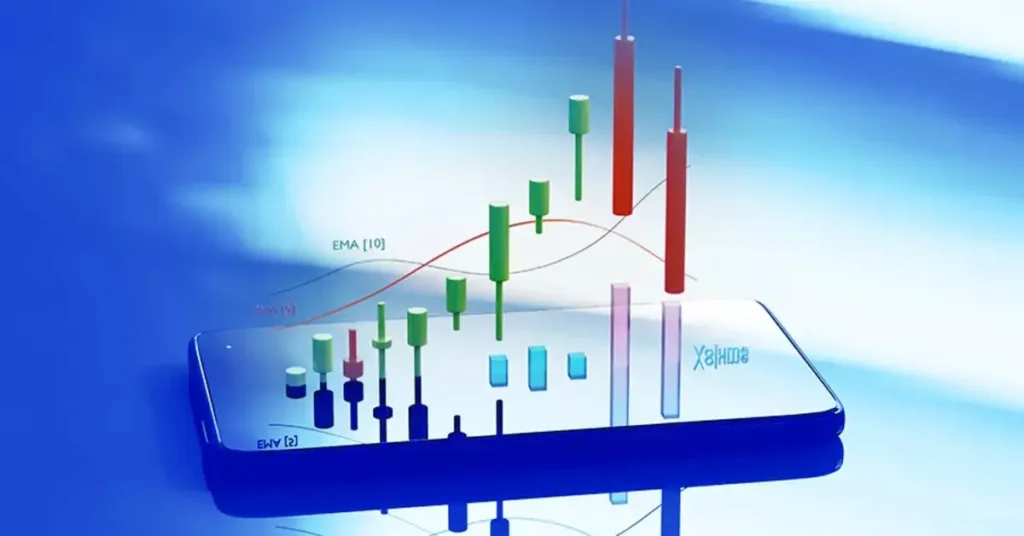EUR/USD Price Update: German PMI Signals Shallow Downturn
German manufacturing and services sectors have contracted as the economic situation in the EU’s manufacturing hub has withered. However, November’s data eases the fears of a deep recession in the country, according to the latest Purchasing Managers’ Index (PMI) figures. The German Flash Composite PMI, which measures the activity of both sectors, rose to 47.0 in November, up from 45.8 in October, beating expectations of 45.9. While the PMI still indicates a contraction, the pace of decline has slowed, suggesting a shallower downturn.
The EUR/USD has reacted positively to the news, rising to a fresh daily peak around the 1.0930 area. The PMI data suggests that the eurozone’s largest economy may be stabilizing, which could have a positive impact on the euro. However, the data also shows that Germany’s manufacturing sector is still in recession, with the PMI falling to 43.5 from 45.0 in October. The services sector also contracted, but at a slower pace, with the PMI rising to 50.0 from 49.0 in October.
Key Takeaways
- The German Flash Composite PMI suggests a shallower downturn in the country’s economy.
- The EUR/USD has reacted positively to the news, rising to a fresh daily peak around the 1.0930 area.
- While the PMI data suggests that the eurozone’s largest economy may be stabilizing, Germany’s manufacturing sector is still in recession.
Economic Data Analysis
https://www.youtube.com/watch?v=kF_LCU-2_XA&embed=true
Manufacturing Sector
The German manufacturing sector has been showing signs of a shallow downturn, according to the latest PMI data. The manufacturing PMI for November came in at 49.5, up from 48.7 in October, indicating a slight improvement in the sector. However, the reading is still below the 50.0 mark that separates expansion from contraction.
The data suggests that the manufacturing sector is struggling to gain momentum as weak global demand and trade tensions continue to weigh on the industry. This could have a negative impact on Germany’s GDP growth in the short term.
Services Sector
The services sector in Germany has also been facing headwinds, with the PMI for November coming in at 49.2, up from 48.9 in October. The reading suggests that the sector is also experiencing a shallow downturn.
The data indicates that the services sector is being impacted by weak demand, which is leading to a decline in new business and employment. This could have a negative impact on Germany’s overall economic growth.
Inflation in Germany remains low, with the latest data showing that the consumer price index increased by just 1.2% year-on-year in October. This is below the European Central Bank’s target of close to 2%.
Overall, the latest economic data from Germany suggests that the country’s economy is facing challenges, particularly in the manufacturing and services sectors. While there are some signs of improvement, the data indicates that there is still a long way to go before the economy can return to its previous levels of growth.
Forex Market Outlook
https://www.youtube.com/watch?v=9VHGqKJ90GA&embed=true
Technical Analysis
The EUR/USD pair has been trading in a bearish trend since the beginning of the month, with a steady decline in value. The German PMI report released on November 23, 2023, points towards a shallow downturn in the Eurozone economy, which has further weighed on the pair’s value.
From a technical analysis perspective, the EUR/USD pair is currently trading below both the 50-day and 200-day exponential moving averages (EMAs), which is a bearish signal. The 50-day EMA is acting as a resistance level, and the pair has failed to break above it in the past few trading sessions.
The Relative Strength Index (RSI) is currently at 43, which indicates that the pair is neither oversold nor overbought. However, if the RSI drops below 30, it would indicate that the pair is oversold and could potentially rebound in the short term.
Resistance and Support Levels
The current resistance level for the EUR/USD pair is at 1.0929, which is the 50-day EMA. If the pair manages to break above this level, it could potentially test the 1.1000 psychological level.
On the other hand, the current support level for the pair is at 1.0850, which is a key psychological level. If the pair breaks below this level, it could potentially test the 1.0800 support level.
In summary, the EUR/USD pair is currently trading in a bearish trend, with the German PMI report indicating a shallow downturn in the Eurozone economy. From a technical analysis perspective, the pair is trading below both the 50-day and 200-day EMAs, and the RSI is at 43. The current resistance level for the pair is at 1.0929, and the support level is at 1.0850.
Impact on Eurozone Economy
https://www.youtube.com/watch?v=03CxYK-5Moo&embed=true
Growth Prospects
The recent German PMI data suggests a shallow downturn in the Eurozone economy, which could have a negative impact on the growth prospects of the region. The PMI data showed a contraction in the manufacturing and services sectors, which could lead to a decrease in business activity and investment. This could, in turn, lead to a reduction in employment opportunities and a slowdown in economic growth.
Recession Risks
The contraction in the Eurozone economy raises concerns about the possibility of a recession in the region. The PMI data indicates that the slowdown is likely to continue in the coming months, which could lead to a prolonged period of economic contraction. This could have a significant impact on the Eurozone economy, as it could lead to a decline in consumer confidence, a decrease in investment, and a rise in unemployment.
In conclusion, the recent German PMI data points towards a shallow downturn in the Eurozone economy, which could have a negative impact on the growth prospects of the region. The contraction in the manufacturing and services sectors raises concerns about the possibility of a recession in the region, which could have significant economic consequences. It is important for policymakers to take appropriate measures to address these challenges and support economic growth in the Eurozone.
Implications for Traders
https://www.youtube.com/watch?v=vmFJpoe_DVc&embed=true
Trading Strategies
The German PMI data has shown a shallow downturn, which can have significant implications for traders in the EUR/USD market. The data indicates that the economic situation in the EU’s manufacturing hub has weakened, which can lead to a decrease in demand for the euro. Traders can use this information to adjust their trading strategies accordingly.
One potential strategy is to open short positions on the EUR/USD pair, as the data suggests a possible decline in the euro’s value. Another strategy is to monitor the market closely and wait for more data to confirm the trend before making any trading decisions.
Traders should also consider the impact of other economic indicators, such as inflation and earnings reports, on the market. It is important to have a well-rounded understanding of the market to make informed trading decisions.
Market Volatility
The German PMI data can also lead to increased market volatility, as traders react to the news and adjust their positions accordingly. This can create opportunities for traders to enter or exit the market at favorable prices.
Traders should be prepared for potential volatility and have a plan in place to manage their positions. This may include setting stop-loss orders to limit potential losses in case the market moves against their position.
It is also important to monitor open markets and trading day schedules to ensure that positions are managed effectively. Traders should be aware of any potential market-moving events and adjust their positions accordingly.
Overall, the German PMI data can provide valuable insights for traders in the EUR/USD market. By staying informed and adjusting their strategies accordingly, traders can take advantage of potential opportunities and manage their risk effectively.
Disclaimer
https://www.youtube.com/watch?v=X708iIOXacc&embed=true
Before making any investment decisions, it is important to understand the risks and uncertainties involved in trading. The information provided in this article is for educational purposes only and should not be considered as financial advice. The author does not take any responsibility for any losses incurred as a result of using the information provided in this article.
It is important to note that trading involves emotional distress and can lead to financial losses. Therefore, it is important to be aware of the risks involved and to make informed decisions based on accurate and complete information.
While the author has made every effort to ensure accuracy, completeness, and absence of errors and omissions in the information provided, there may be some inaccuracies or omissions due to the dynamic and ever-changing nature of the financial market. The author does not guarantee the accuracy, completeness, or timeliness of the information provided in this article.
In conclusion, it is important to exercise caution and due diligence when making investment decisions. It is recommended to seek the advice of a financial advisor before making any investment decisions.









